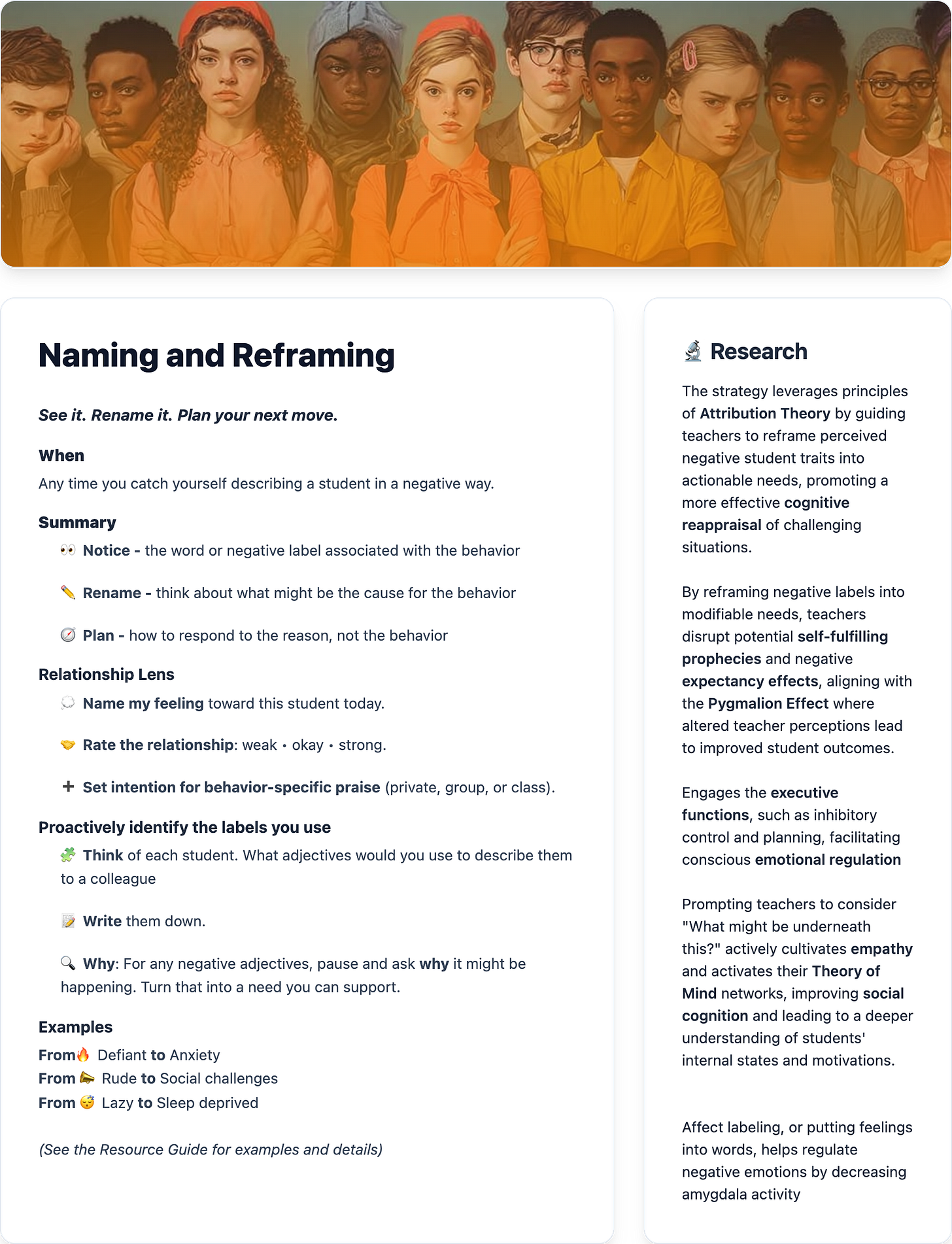See The “Problem Kid” In A New Light
A real-classroom guide to change the self-talk and change the outcome
Building Collaborative Groups in the Classroom
Building collaborative groups is never easy. The considerations are many. 🤔 “Doesn’t get along with others. Argues all the time. Talks, talks, talks.”
Those words color what we notice and shape what we expect.
They lower tolerance and raise the odds we treat kids differently.
Why my labels stick
Our brains love shortcuts.
One defiant moment can cast a permanent shadow.
We start scanning only for proof of the problem. Crucially, we stop scanning for ways to prevent the problem.
Our brains are naturally wired to prioritize protection over connection. We can change that.”
The words I choose directly shape what I expect and what I do.
Strategies to Help Shift Your Perspective
Below are two strategies to help shift the labels we use to describe students. This immediately begins to decrease our daily challenges, leaving us feeling less drained and overwhelmed.
Naming and Reframing: See It. Name It. Plan It
Any time you catch yourself describing a student in a negative way, the “Naming and Reframing” strategy guides you through three steps:
Notice: Identify the word or negative label associated with the behavior.
Rename: Think about what might be the cause or purpose for the behavior.
Plan: Decide how to respond to the reason, not the behavior.
This strategy directly leverages Attribution Theory and principles of cognitive reappraisal to promote more effective emotional regulation.
Respond to the need, not the behavior
We all know doing things differently is easier said than done.
When I look for the reason beneath the behavior, I see it’s usually not about me. It often reflects underlying factors such as past trauma, academic difficulties, or anxiety.
By shifting perspective from reactive to empathetic understanding and connection, teachers open a door for relationship-building and growth.
See the Need Behind the Deed
The single most powerful shift you can make is moving from seeing and using a judgmental label (disruptive, mean) to understanding the purpose behind the behavior (insecure, overwhelmed). This strategy provides you the resources to stop reacting to the surface behavior and start responding to the need. It empowers you to instantly set aside feelings of incredulity and disrespect when an F-bomb flies or an argument erupts, transforming frustrating moments into proactive next steps for tomorrow.
Inside the app, you’ll receive the complete strategy guide, including four invaluable resources to walk you through the steps needed to discover the root causes of challenging behaviors.
👉 Open “Turning Negative Feelings Around” in the BrainZones app to access the full strategy.
The BZ app offers an “Always Free” tier, giving you access to key features without any cost and no time limit. Enjoy features such as favorites💕 and AI personalization and more.
Language checkpoint and why it matters
We often address the negative and leave the positives unsaid. I think of the student as bad instead of noticing the good. I get defensive and reactive, acting as if the problem were me. The narrative I use shapes how I feel and ultimately what I do. The more I learn and the more I understand, the more empathetic I can be.
The shift from judgment to compassion is the first step toward changing the outcome.
Thanks for reading,
Debbie and the BZ Team





